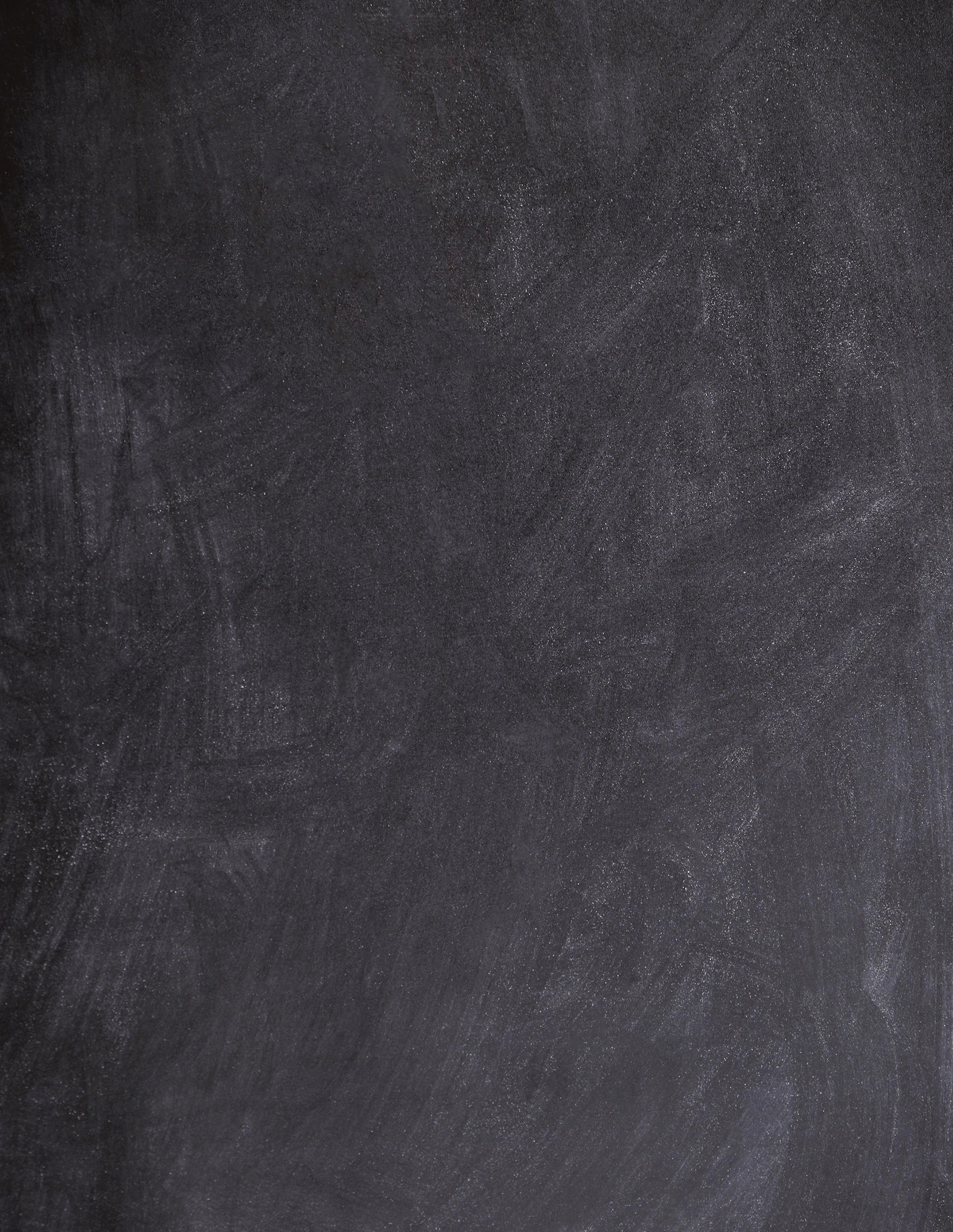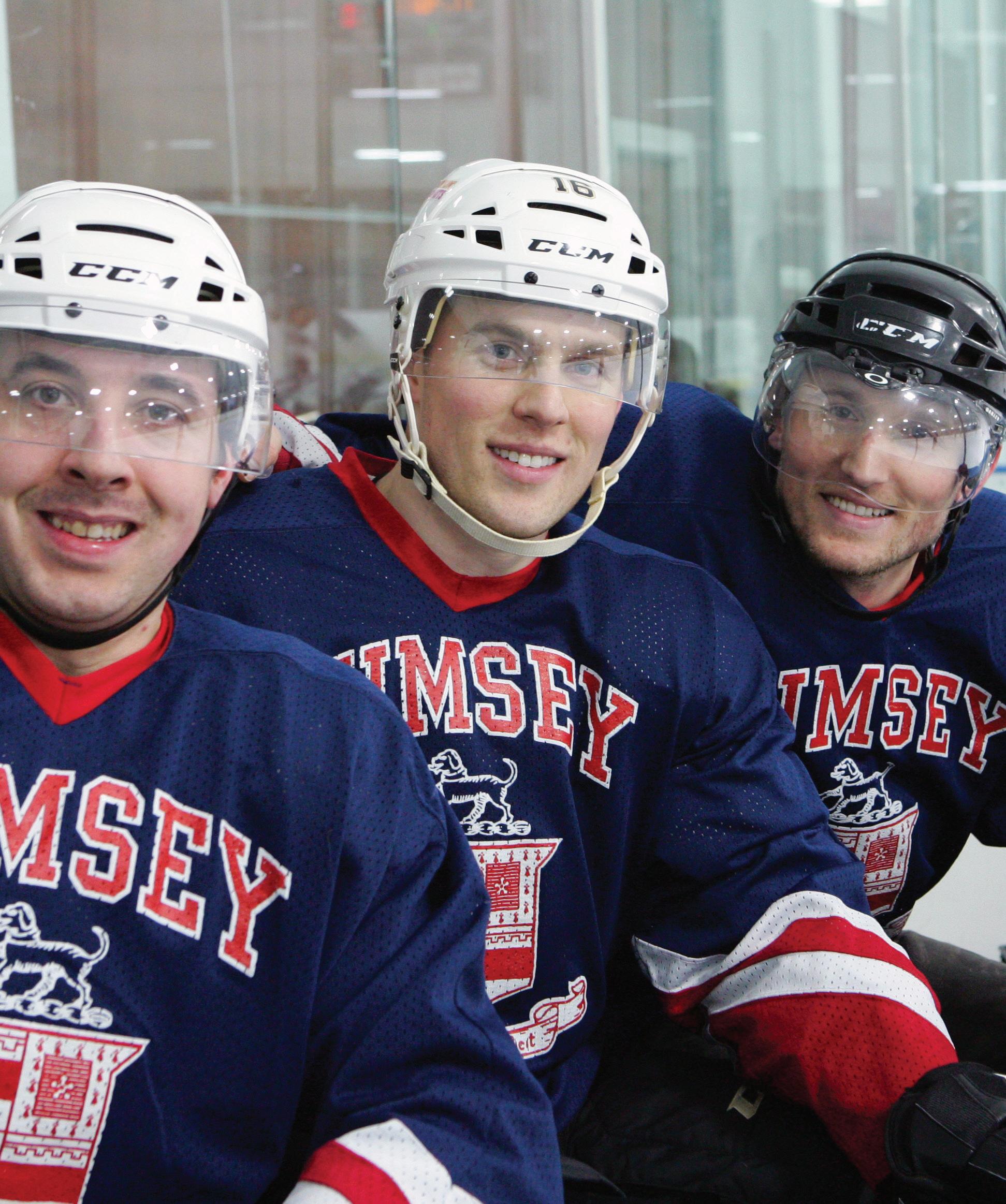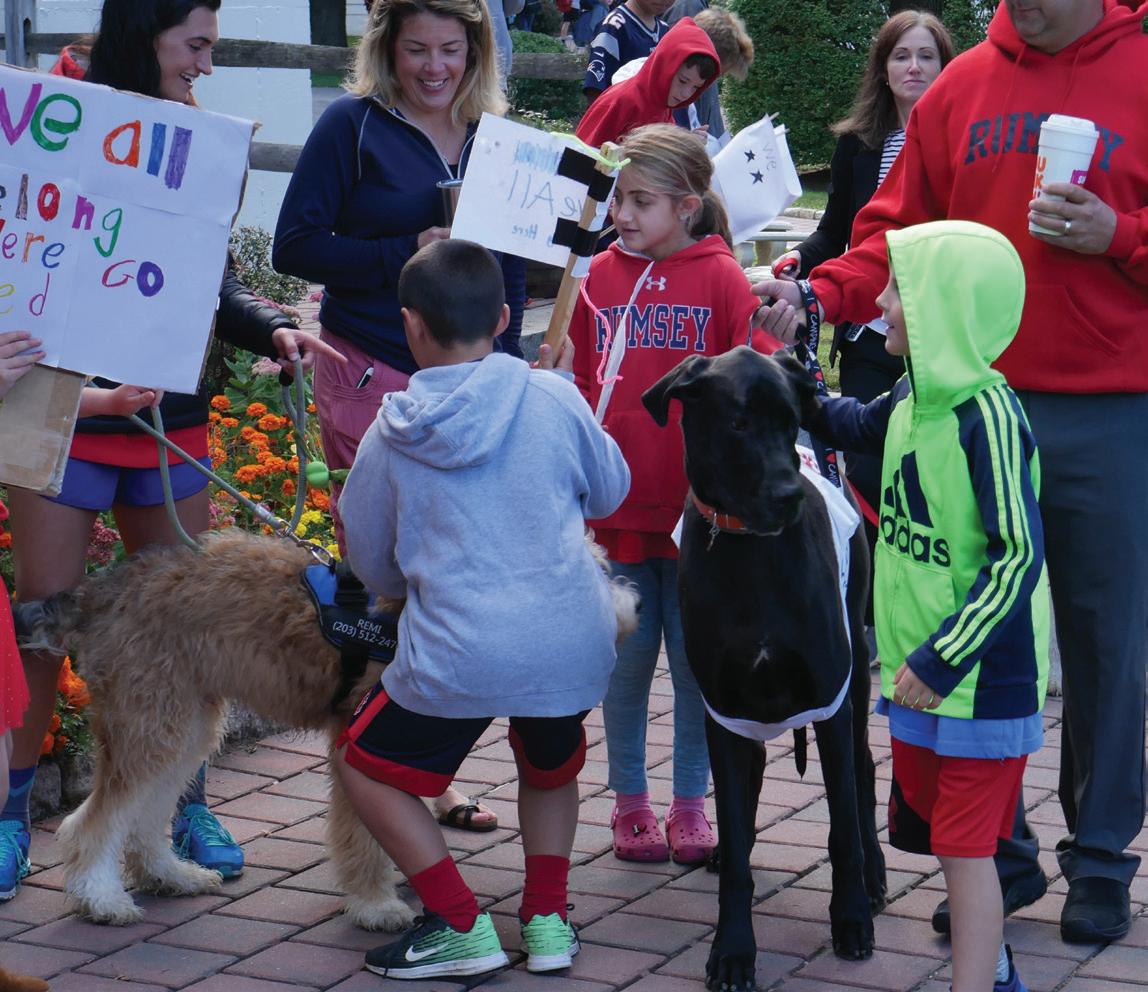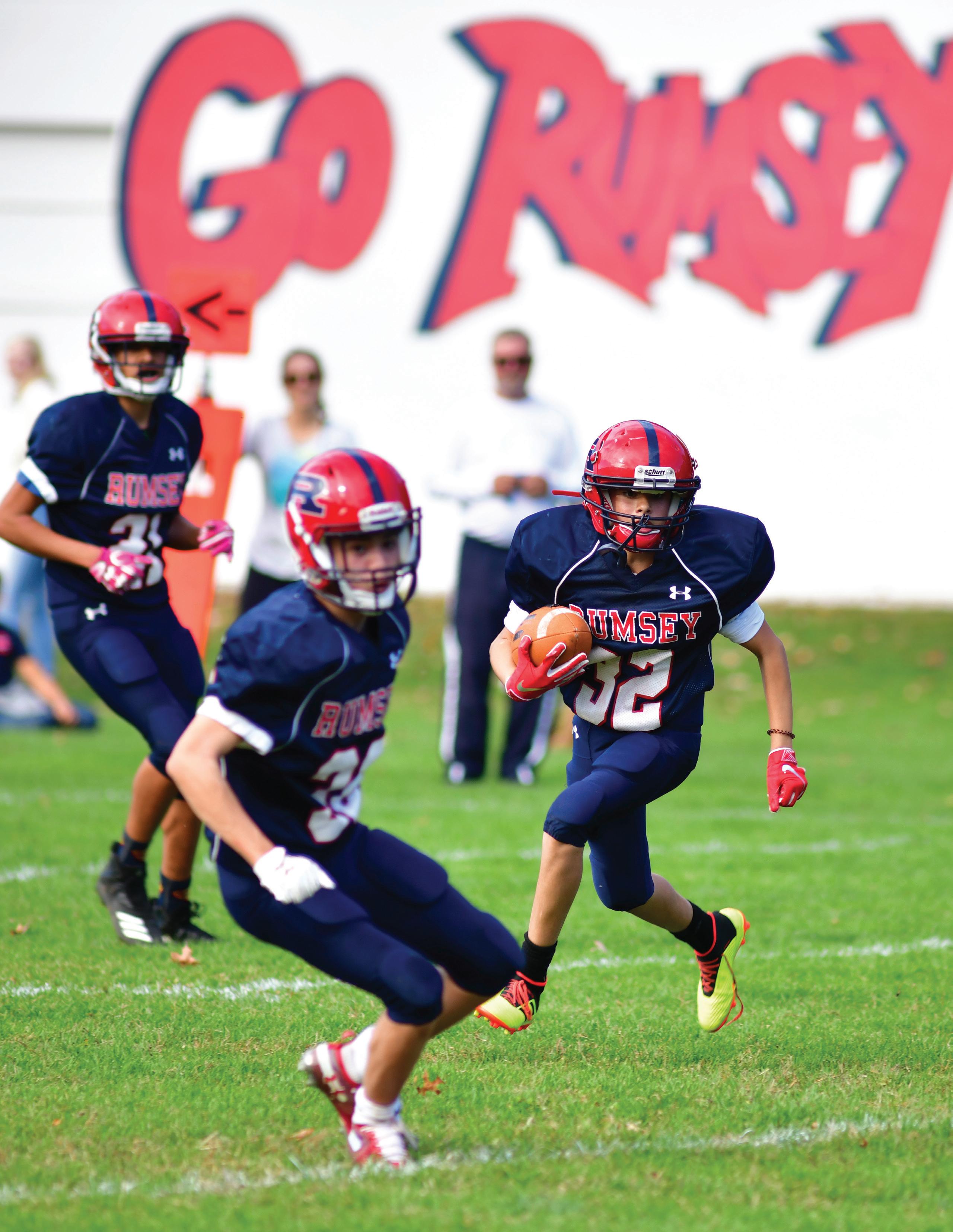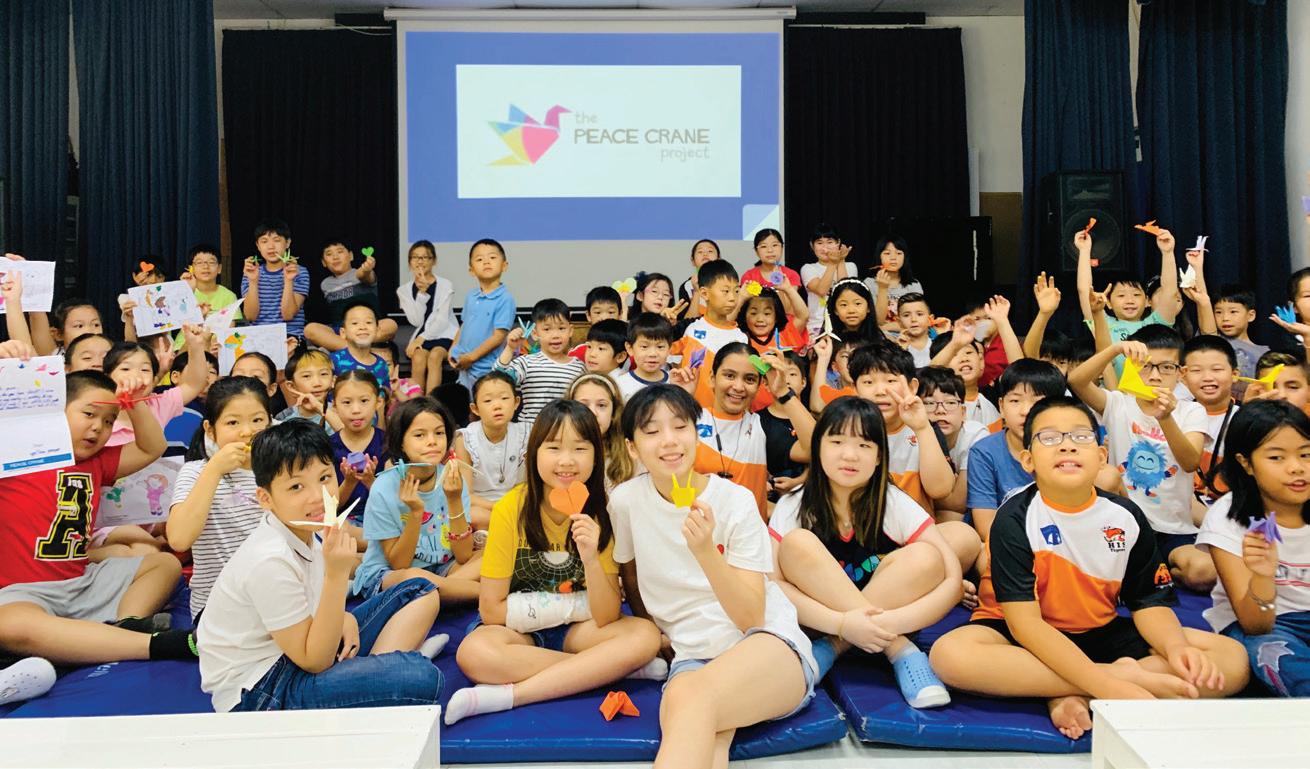
10 minute read
Diversity, Equity, Inclusion, & Justice at Rumsey
from 2019-2020 Rarebits

DEIJ LEADERS
Rumsey sat down with faculty members Kim Mandl P'07, '11, '15 and Craig Ough P'23 to talk about the issues of Diversity, Equity, Inclusion, and Justice on our campus.
Since the writing of this article, the world and our community have been turned upside down. The Covid-19 pandemic began with anti-Asian sentiment throughout the world and we even heard fear and hate speech spread on our campus. Two incredible students from China, Emily Son ‘20 and Miranda Wang ’20, worked with Craig Ough to share a factual and informative presentation about coronavirus that dispelled myths for our greater community. We led two empowering Zoom meetings with VIth and VIIth Form students and several faculty that focused on hate speech and the power of words. Students were engaged and thoughtful in sharing their personal experiences and offered suggestions for how to make our community more inclusive so that everyone truly feels they belong. After the murders of Breonna Taylor, Ahmaud Arbery, and George Floyd, we wrote letters to our community on Rumsey’s stance regarding hate. We shared our plans regarding work the school has done and is committed to doing going forward. We received feedback from several alumni after those communications – thank you! Some were rightfully upset and some shared the positive experience they had while they were here. All were willing to jump into the work and help break down our own systems of oppression. As time moves forward and we listen to divisive words and witness violence all around us, we are committed to standing beside those in our Rumsey family and in the world who are pushed to the margins of society, to upend systems and policies that rob them of opportunity and peace. We look forward to hearing more from alumni and to working with our entire community in our antiracist work. – Kim Mandl and Craig Ough
How did Rumsey’s initiative towards Diversity,Equity, Inclusion (DEI) begin? Where did yourinvolvement start? CRAIG: The kids were telling us they needed more from their experience at Rumsey. They were having conversations about inclusivity and overall awareness regarding the school. These percolated up in different ways, such as Morning Meeting announcements and student led awareness campaigns. Even conversations among the adults indicated there was something missing in the climate of the school. The initiatives led by students wishing for a better community experience regarding multicultural awareness had to be amplified by mentors and school leaders.
The foundation of my involvement in DEI really started from my work in community engagement and character education. Middle school students should practice the skills
of discussion, reflection, and listening to others. About three years ago, I attended the Gardner Carney Leadership Institute as a professional development opportunity to invest in a character and leadership program at Rumsey Hall, as well as improve my Challenge 20/20 community engagement class. The mentors of that program wove diversity and multicultural intelligence in with their character curriculum and lessons about developmental needs and communication skills. I was excited to bring these techniques to our teachers. I offered what I could to faculty workshops that start our term and organized a Character Day which was an exercise in deliberate teaching of character skills, but also cultural awareness and anti-bias. The Challenge 20/20 class certainly was infused with these new lessons, but more importantly the value of giving and receiving feedback. While all of this was going on, Kim and I worked together, compiling our experiences and
interests in an increasingly organized manner, pushing the school to do more DEI work. Eventually, we were asked to oversee the Diversity, Equity, and Inclusion Task Force during our strategic planning process.
KIM: I think there are many answers to how our initiative towards a diverse, inclusive, and equitable school began. I know that for the last few years, many students approached me with their own personal struggles regarding diversity. Students who identified “differently” would come to me seeking help or understanding around their experiences here on campus – some of them quite challenging and upsetting. Discussion among administrators surrounding the need for building capacity in our faculty to discuss with and educate our students about diversity and more importantly equity and inclusion seemed to increase. The Board of Trustees, administrators, and department heads met during a retreat in June 2019 and from that meeting a Strategic Plan for Rumsey was initiated. Several areas of study were determined to be a priority for the school. Craig and I were asked to co-chair the task force on Diversity, Equity, Inclusion, and Justice. While my official journey in diversity education began in the Summer of 2019 I have spent my life amplifying underrepresented voices, being an upstander and an interrupter of bias and hate, and helping support equity and opportunity for all. I work my hardest to make everyone feel welcome and valuable and worthy. Especially those who feel marginalized – for any reason – skin color, religion, beliefs, sexual orientation, gender expression, culture, family makeup or socio-economic status.
Tell us about the People of Color Conference(PoCC) and your experience there? How will youuse the things learned there to improve the DEIefforts at Rumsey? KIM: The NAIS PoCC is committed “to equity and justice in teaching and learning. The mission of the conference is to provide a safe space for leadership and professional development and networking for people of color and allies of all backgrounds in independent schools. PoCC equips educators at every level, from teachers to trustees, with knowledge, skills, and experiences to improve and enhance the interracial, interethnic, and intercultural climate in their schools, as well as the attending academic, socialemotional, and workplace performance outcomes for students and adults alike.” I have attended this conference twice and each
What has been your greatest inspiration so far in this undertaking? CRAIG: My biggest inspiration has been the student led awareness campaigns. I’m amazed by the leadership and passion demonstrated by these students. These have included a gender awareness conversation led by Ellie LaCasse '19, daily announcements duirng Black History Month led by Indiah Kent '19 and Nande Cuba '19, and so many others about discrimination during the pandemic, human ailments, and disability. These steered our school to take a closer look at our overall inclusivity and how way may continue to amplify the student voice.
>
Year one was about learning vocabulary, learning about myself and my lens on life, and feeling honored to be in a place full of the most beautiful minds willing to share their knowledge and life experiences with me. I studied cultural competency and development of identity. I learned about finding opportunities to start conversations with students around diversity and engage them in activities that celebrate identity. I also learned how to begin to incorporate racial literacy through those courageous conversations and activities. Year two was more focused on my own identity as a white woman in a space for people of color to be held up and fortified so that they could move through the world with “full buckets”. I was aware of the space that I was taking up and feeling the need to bring that feeling home with me to Rumsey. I focused my learning on how to bring lessons about leadership and inclusivity into the dorm, classroom, and field. I deepened my understanding of allyship and how to build that skill in the adults and students here at school. Craig and I each went to subject specific anti-bias lesson building workshops in support of building faculty capacity towards our DEIJ initiatives.
time I had a different experience.
KIM: Working with students and watching them start to think on their own, question their views and the views of those around them. I love to see students chew on a topic and then have an “aha” moment or be able to justify their opinion. There are students who I have watched learn to trust a few more adults than they used to. Just knowing that a few teachers, administrators, or staff members are there to be a safe haven can make a student’s experience here immensely positive. Several students have become leaders and allies in the work of diversity and inclusion as they learn to trust themselves. That is truly inspirational.
planning in support of marginalized populations at our school, such as affinity groups and community-wide celebrations. As this grows, there are numerous ways to expand this work to include parents and alumni.
KIM The work of DEI is long and forever ongoing. People are ever evolving and changing. Middle school is one of the places we begin to learn about who we are and who we want to be. We also learn about other people and who they are. It is most important that we learn how to embrace and celebrate the things we each have in common as well as, and almost more importantly, the things that are different and unique about each of us. My goal for the entire Rumsey family, our community, is that we all feel safe, respected and valued. That we are committed to an inclusive mission that teaches social responsibility, justice and cultural competency. I hope we can achieve a school culture where we celebrate everyone’s appearance, perspective, values, and ability. I hope that becomes our living mission.
What has been the greatest challenge? KIM: Patience. Patience is my greatest challenge in all parts of my life, but because being patient in making Rumsey a more inclusive and representative community is so personal and important to me it has been especially hard to “wait”. Some things seem so natural and instinctive to me and I want change to happen right away. I realize and accept that our community is on a journey and that it takes time. Also, knowing that we are moving forward and that our administration and the Board have made the work their priority keeps me feeling inspired and energetic. The bottom line in this work is that we are beyond talk. There needs to be action. Now is the time for action.
How can people in the Rumsey community bestsupport the DEI effort? KIM: Awareness is most important. Recognizing that our community will only be stronger when we embrace and practice DEI is key. Our world will only increase in multiculturalism and it is important for anyone in a mentor or leadership role to build their cultural competency. As we build our own competencies our students will develop stronger multicultural intelligence. Ideally our students will act to make our community a safe place for all to learn. We need to foster a community of learners where students get to practice cooperation, collaboration and most importantly, communication.
CRAIG: Change takes time. There’s an urgency to the work and a need to get everyone boarded as soon as possible. Doing that correctly takes adequate research and planning as it’s about building an overall climate of inclusion and tolerance.
What are your goals for DEI at Rumsey? CRAIG: Ideally, we need to be an institution that teaches our students to be decent humans, and there are really two pieces to this. There’s the need for ensuring the school’s overarching policies and philosophies are lined with DEI best practices which ultimately leads to greater representation of people on our Board, as school leaders, and as employees. These policies and philosophies need to steer our entire school towards greater cultural competency and continuously aim to reduce unintentional bias. There’s also the need for thoughtful and deliberate planning for students. I envision an enhanced curriculum where kids learn about different cultures in all of their classes. I hope for an environment within which they are allowed to practice conversation, giving them opportunities to hear others and also be heard. There needs to be adequate
CRAIG: The best way for the Rumsey community to help with DEI efforts is for each of us to look at ourselves and be open to opinions and different perspectives. I would like to see us all have the desire to teach all of our students (and help each other) look deeper than the surface, to think critically, to build compassion, become multiculturally competent, and to commit to celebrating everyone’s individuality. We should look outward to increase our understanding, improve our skills, and expertise around DEI, but we also look inward to better understand each other and our different backgrounds. Only then will we truly be committed to the process. The last thing I want to say is that this can no longer be only a DEI issue. We MUST add the J for Justice.

